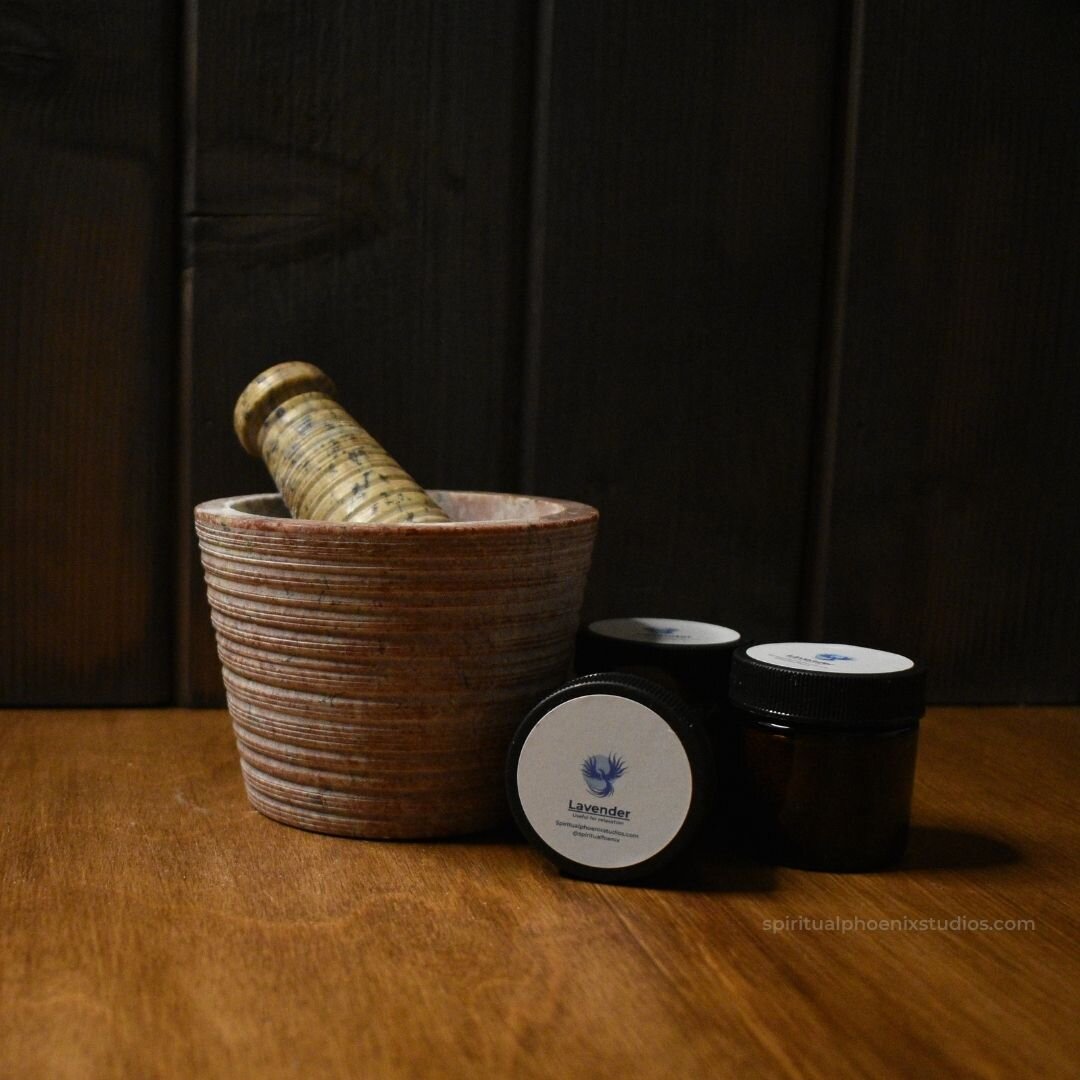From Ashes to Enlightenment
The Spiritual Phoenix Studios Blog
This blog is a sanctuary for neurodivergent souls exploring the intersection of magick and spirituality. Discover resources to guide you through spiritual emergencies, support your healing journey, and provide accessible entry points into magical practices. From introductory techniques to advanced explorations, we're here to help you unlock your potential and thrive on your path.
Creating a Sacred Space for Mental Wellness: A Guide to Setting Up Your Altar
Are you tired of feeling stressed and overwhelmed? Do you struggle to find peace and tranquility in your daily life? If so, you're not alone. In today's fast-paced world, it's easy to feel like we're constantly running on autopilot, with little time to slow down and take care of ourselves. But what if there was a way to create a sacred space for mental wellness in your own home? A place where you could escape the hustle and bustle of everyday life and connect with your inner self?
Enter the altar. An altar is a personal space that you can use to cultivate mindfulness, meditation, and spiritual growth. It's a place where you can set intentions, light candles, and practice rituals to help you feel more grounded and centered. And the best part? You can create an altar anywhere - in a corner of your bedroom, on a balcony, or even in a small nook in your living room.
In this article, we'll show you how to create a sacred space for mental wellness by setting up your own altar. We'll cover everything from choosing the perfect location to selecting the right items to include on your altar. We'll also provide tips for creating a ritual that works for you, and offer suggestions for maintaining your altar space. Whether you're a seasoned meditator or just starting out on your mindfulness journey, this guide will help you create a peaceful oasis in your own home. So why wait? Let's get started!
Choosing a Space
When it comes to creating a sacred space for mental wellness, the location of your altar is crucial. It's important to choose a quiet, peaceful space where you can meditate, reflect, and connect with your inner self without distractions. Consider the ambiance and energy of the space, as well as the flow of traffic and noise level. You want to choose a space that feels calm and serene, where you can focus on your mental well-being without interruptions.
There are many different spaces that can be used for an altar, depending on your personal preferences and the layout of your home. A corner of a room, such as a bedroom or living room, can be a great option. This allows you to create a cozy, intimate space that is separate from the rest of the room. Alternatively, you can use an outdoor area, such as a patio or garden, to create a natural and peaceful altar space.
Some examples of spaces that can be used for an altar include:
A corner of a room with a comfortable chair or cushion for meditation
A small table or shelf in a quiet area of your home for displaying altar items
A outdoor patio or garden with a bench or chair for meditating in nature
A designated altar room or meditation space in your home
No matter which space you choose, make sure it feels comfortable and peaceful to you. This will help you create a sacred space that you'll want to return to again and again for your mental wellness practice.
Setting Intentions for Your Altar and Mental Wellness Practice
Setting intentions is a crucial step in creating a sacred space for mental wellness. Intentions are the foundation upon which your altar and practice are built, and they help to focus your energy and attention towards achieving your goals. When you set intentions, you're clarifying your goals and aspirations, and creating a roadmap for your mental wellness journey.
There are many different intentions you can set for your altar and mental wellness practice. Some examples include cultivating mindfulness, reducing stress, improving sleep, increasing productivity, and enhancing creativity. You can also set intentions for specific areas of your life, such as relationships, career, or personal growth. The key is to identify what's most important to you and create intentions that align with your values and goals.
To set intentions, you can write them down or speak them aloud. Writing down your intentions can help to clarify your thoughts and make them feel more concrete. Speaking your intentions aloud can help to amplify their power and make them feel more real. You can also create a ritual around setting intentions, such as lighting a candle or burning incense. The most important thing is to find a method that works for you and to make setting intentions a regular part of your mental wellness practice.
Choosing Altar Items to Support Mental Wellness
When it comes to selecting items for your altar, the possibilities are endless. Candles, plants, crystals, and other sacred objects can all be used to create a space that promotes mental wellness. Each item you choose should be selected with intention and care, as it will help to create a space that is tailored to your specific needs and goals.
Candles, for example, can be used to represent the fire element and to bring light and warmth to your altar. Lavender candles, in particular, can be used to promote relaxation and calmness, making them a great choice for anyone looking to reduce stress and anxiety. Plants, such as sage or sweetgrass, can be used to purify and cleanse your space, while crystals, such as amethyst or quartz, can be used to amplify the effects of your intentions and to bring balance and clarity to your mind.
When choosing altar items, it's important to select items that resonate with your intentions and personal beliefs. Consider what each item represents to you and how it can help you to achieve your goals. For example, if you're looking to improve your focus and concentration, you may want to include a crystal like citrine or pyrite on your altar. If you're looking to promote relaxation and stress relief, you may want to include a plant like lavender or a candle in a calming scent. By choosing items that resonate with your intentions, you can create a space that is tailored to your specific needs and goals.
The Power of Rituals in Altar Practice
Creating a ritual for your altar practice is a crucial step in harnessing its full potential for mental wellness. A ritual is a repeated action or behavior that holds meaning and significance, allowing you to connect with your inner self and the space you've created. By incorporating rituals into your practice, you can establish a sense of consistency and routine, which is essential for maintaining mental well-being.
Examples of simple yet effective rituals you can incorporate into your altar practice include lighting a candle, meditating, or performing a brief prayer or affirmation. These actions serve as a signal to your mind and body that it's time to focus on your mental wellness, allowing you to transition into a state of calm and receptivity. You can also tailor your rituals to align with your personal beliefs and values, making them even more meaningful and impactful.
Regular rituals can also help you develop a deeper connection with your altar and the intentions you've set. By performing the same actions consistently, you create a sense of familiarity and comfort, allowing you to access a state of inner peace and clarity more easily. This, in turn, can enhance the effectiveness of your altar practice, helping you to achieve a greater sense of mental balance and well-being.
Tips for Maintaining Your Altar's Energy and Organization
To maximize the benefits of your altar practice, it's essential to maintain your sacred space and keep it clean, clutter-free, and organized. A well-maintained altar not only creates a peaceful and inviting atmosphere but also helps to preserve the energy and intentions you've infused into the space. Neglecting your altar can lead to stagnant energy and a disconnection from your mental wellness goals.
To keep your altar space organized, consider using an altar cloth to protect the surface and make cleaning easier. You can also store items not currently in use in a designated container or drawer, keeping only the most meaningful and relevant items on display. Regularly dusting and cleaning your altar items, such as crystals and figurines, will also help to remove any accumulated negative energy.
Maintaining your altar is not just about physical cleanliness; it's also about maintaining the energy and intentions you've set. By regularly tending to your altar, you reinforce your connection to your mental wellness goals and keep your practice fresh and engaging. A well-maintained altar can also serve as a visual reminder of your commitment to your mental well-being, motivating you to stay consistent with your practice and cultivate a deeper sense of inner peace and balance.
Conclusion: Bringing Mental Wellness into Your Life
Creating a sacred space for mental wellness is a powerful way to cultivate inner peace, reduce stress, and promote overall well-being. By choosing a quiet and peaceful space, setting intentions, selecting meaningful altar items, creating a ritual, and maintaining your altar, you can create a personal sanctuary that supports your mental health journey. Remember, your altar is a reflection of your personal beliefs and intentions, so feel free to experiment and make it your own.
As you embark on this journey, remember that you are not alone. Join our community on Discord, where you can connect with like-minded individuals, share your experiences, and learn from others. Together, we can support and uplift each other on our paths to mental wellness.
To join our Discord community, click on the following link: https://discord.gg/ZzFmY8afnA. We look forward to welcoming you to our community and supporting you on your journey to mental wellness.
By taking the time to create a sacred space for mental wellness, you are investing in your own well-being and committing to a journey of self-care and personal growth. Remember to be patient, kind, and compassionate with yourself as you navigate this journey. You deserve to live a life filled with peace, joy, and purpose.
From Frankincense to Myrrh: Historical Roots of Popular Incenses
Incense has long been an aromatic bridge connecting the tangible world to the spiritual realm. From the temples of Ancient Egypt to the shrines of Asia, the evocative scents of Frankincense, Myrrh, and other fragrances have played a pivotal role in religious, medicinal, and everyday practices. At the core of Girard, Ohio, Spiritual Phoenix Studios takes you on a historical journey, unraveling the mystique surrounding these cherished resins.
Incense in Ancient RitualsLong before incense found its way into modern meditation rooms, it was revered for its divine connection:
Egyptian Temples: Pharaohs and priests used incense in religious rituals, believing the rising smoke carried their prayers to the deities.
Roman Ceremonies: Incense played a role in state and religious events, signifying honor and veneration.
Frankincense: The King of Incense
Extracted from the Boswellia tree, Frankincense's name means "high-quality incense" in Old French.
Religious Significance: Used in Judeo-Christian traditions, it was one of the gifts offered by the Magi to the infant Jesus.
Medicinal Uses: Ancient civilizations utilized Frankincense for its supposed anti-inflammatory properties and as an essential component in traditional medicine.
Myrrh: A Fragrant Symbol
Derived from the Commiphora tree, Myrrh is often associated with death and mourning due to its preservative qualities:
Egyptian Burials: Myrrh was an integral part of the embalming process.
Spiritual Role: Beyond its association with death, Myrrh was seen as a symbol of suffering, healing, and transformation in various religious contexts.
The Trade and Spread of Incense
Trade routes, especially the famed Incense Route, facilitated the spread of incense across different civilizations. Merchants from Asia, the Middle East, and North Africa exchanged these aromatic treasures, merging cultures and traditions in the process.
Incense Today at Spiritual Phoenix Studios
Fast forward to the 21st century, Spiritual Phoenix Studios offers a curated collection of incenses, honoring their rich legacy while adapting to contemporary spiritual practices. Delve into a world where history meets modern-day rituals, fostering a connection between the past and the present.
Conclusion
Incense, with its deep historical roots, serves as a testament to humanity's age-old quest for spiritual connection, healing, and enlightenment. By understanding its origins, we can appreciate the depth and richness it brings to our current practices.
For more enlightening explorations into the world of metaphysics, rituals, and spirituality, visit the Spiritual Phoenix Studios’ blog. Dive deep into the essence of age-old practices and their resonance in our contemporary world.
The Language of Incense Smoke: Interpreting Rituals and Signs
Incense, a timeless companion of mystics and spiritualists, has always held an air of divine mystery. From the ancient temples of Egypt to the serene meditation rooms of Spiritual Phoenix Studios in Girard, Ohio, it serves as a bridge between the physical and spiritual realms. Beyond its pleasant aroma, incense smoke carries a language of its own – one that, if deciphered correctly, reveals insights into our spiritual journey.
Understanding the Smoke's Dance
The swirling patterns of incense smoke aren't merely a product of air currents. They're believed by many to contain messages from the divine or the universe.
Straight Rise: Smoke that ascends straight upwards is often seen as a sign that one's prayers or intentions are being heard. The clearer the path, the more unobstructed the message.
Spirals and Twirls: A smoke pattern that forms spirals or twirls can signify that there are spiritual forces around, possibly indicating the presence of spirit guides or angels.
Dense or Thick Smoke: This may indicate blockages or negative energies in the surroundings. It's a call to re-evaluate and cleanse one's space.
Quick Dispersion: Smoke that disperses quickly can signify that it's not the right time for the ritual or that the environment isn't energetically conducive.
🔗 To experience the magic of authentic and handpicked incense blends, visit Spiritual Phoenix Studios Shop.
Incorporating Incense in Rituals
Beyond divining messages from the patterns, the type of incense you choose for your ceremonies at Spiritual Phoenix Studios plays a significant role. Each scent corresponds to different energies:
Sandalwood: Promotes calmness, clarity, and spiritual awareness.
Frankincense: Used for purification and enhancing intuition.
Myrrh: Fosters grounding and is often used for protection.
Lavender: Enhances peace, love, and harmony.
Remember, while the language of the smoke offers guidance, your intuition plays a pivotal role. The same pattern might mean different things at different times. Trust your feelings as you interpret the messages.
Conclusion
The delicate dance of incense smoke is more than just a visual delight. It's a spiritual tool that, when approached with reverence and understanding, can offer profound insights. As with all spiritual practices, patience, practice, and belief are key. Continue your spiritual exploration and discover more such insights on our From Ashes to Enlightenment blog.







